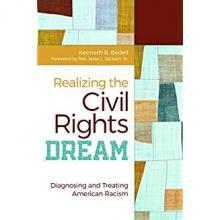Critical Race Theory and Publicly Funded Education

Critical Race Theory (CRT) has created emotional outbursts at school board meetings. President Trump’s executive order banning CRT in government agencies and FOX News rantings all feel like impolite and annoying uninformed racism. But what is at stake is the future of public education and the creation of a multicultural nation without racism. Supporting and promoting CRT is important, not just to ensure a quality American education, but for the future of America. To understand why we need to start by comparing CRT protests to previous parent-school protests.
When courts required school integration, there were angry whites. And school bussing brought out more angry white protesters. Looking back, we can see that school integration and bussing were opposed because of the desire of white parents to preserve privilege. Protests against CRT are different. CRT protests force us to consider how America will move beyond our racist past and present.
School board controversies over CRT and masking to protect students from COVID-19 have much in common. And they are led by a similar demographics of white people who also disliked integration and bussing, but CRT and masking controversies are not only about preserving white privileges.
CRT is about the process by which society adopts new science, the role of a secular public education system, the future of America as a multicultural nation without Racism, and more. Therefore, everyone needs to learn about CRT, discuss it with friends, relatives, and actively promote CRT at school board meetings as if the future of the United States depends on it. Since CRT is about the science (history, sociology, and psychology) of racism, clarifying how new science is adopted is the foundation for both secular publicly funded education and CRT.
How do societies learn something new?
As the COVID-19 pandemic spread, every American had a front-row view of the scientific process and the creation of new knowledge. Dr. Anthony Fauci knew a lot about viruses, but he knew nothing about COVID-19. We all watched as Fauci demonstrated how societies learn something new.
When we were in the 4th grade, we were taught how the scientific method creates new knowledge. First, a scientist has a theory. Then, the scientist designs an experiment to test the theory. If the experiment proves the theory is correct, then humanity has new knowledge. This idea goes back to Sir Francis Bacon in the 16th century.
Dr. Fauci is a brilliant man. Maybe he skipped 4th grade because he used a very different process. Social scientists and advocates of CRT call the process “the social construction of reality.” Dr. Fauci didn’t start with a theory. He had questions: what will keep the virus from spreading, and how can we keep people from dying? The method he used involved collecting and analyzing data, discussing ideas with other experts, and, most importantly, working to convince experts, citizens, and the President that they should take precautions. It wasn’t enough for him to be ‘right,’ he needed to convince people to agree with him. This is the social part of the social construction of reality.
The ‘construction’ part was sometimes painful to watch, but it is the way that society learns something new. One answer is proposed. So, Fauci told us to clean all surfaces with disinfectant as often as possible. Then there is discussion, looking at data, suggestions are made by different people. Calculations are made about how to manage the promotion of each idea. Attempts are made to institutionalize the answers as laws, regulations, or shared practices.
Then new information becomes available, and new questions are raised. This requires proposing a different solution and the construction process of getting society to accept a new reality. So, Fauci told us that the virus spreads through the air, and we are told to wear masks. Now surfaces are no longer thought to be a major source of transmitting the virus. The process is repeated over and over as human knowledge expands.
CRT was spawned in law schools and political science departments at universities where the question was asked, after the legislative advances in civil rights during the 1960 and early 1970 why did progress toward a racially equitable society slow? How could professors explain the role of laws and court cases in promoting civil rights if the strategy wasn’t working as well as they wanted? Articles began appearing in academic legal journals. Legal scholars held meetings. Students advocated for better answers. By 2001, CRT was well established. Richard Delgado and Jean Stefancic published Critical Race Theory: An Introduction, a textbook for law students and political scientists.
Legal scholars began to see that the social construction of reality understanding of human knowledge not only applies to the way new ideas are adopted, but the theory also explains how racism is supported and preserved: Racism is embedded in the way people think (perceive reality), the institutions that organize collective activity, and, of particular interest to professors at law schools, the structures of government where laws are made and litigated.
The goal of ending racism
This new way of understanding what was previously called the scientific method has three important implications for the goal of ending racism. First, if activists who only focus on changing laws are successful, they may make things a little better. However, changing laws will not bring an end to racism. Racism is built into systemic power, so a restructuring of power relationships is required to end racism.
Secondly, racism is socially constructed. It is created by a social process that constructs an understanding of reality that is controlled by people. Since we created racism, we can create a new reality that is not based on racism.
Finally, all cultures are socially constructed. So, the social construction of reality perspective provides a foundation for a multicultural/non-racist future. Since all identify groups have an understanding of reality that is socially constructed, no understanding of reality can claim to be superior to all others. In other words, white culture, white institutions, and white people cannot claim superiority to all other cultures, institutions, and people.
Education based on science
Government funded education fulfills many functions. These change over time as the needs of children and society evolve. The American founders would certainly be surprised that public schools today are a major source of food for millions of children. But there is one role that is consistent since Thomas Jefferson articulated it: children need to be educated at public expense to prepare them for citizenship in a country that is governed by the people. Up until the present, this means that children are taught values that support the interests of the elite white men. So, youth are taught to honor the accomplishments of the revolutionary founders but not to embrace revolutionary values. They learn about manifest destiny without reference to the impact that white expansion across North America had on the Native People, Mexicans, or the environment. And most aspects of race relations are either sanitized or completely ignored.
Preparing Americans to fulfill their role as citizens in a democratic nation requires a commitment to teach our children science, both physical sciences and the social sciences. Chemistry and history deserve the same scientific treatment. Parents and others who demand that schools do not teach the principles of CRT are proposing that the science of race and race relations should not be shared with all American children.
What will children learn?
Bringing CRT teaching into American schools will result in an important discussion about the nature of institutional and systemic racism. Researchers are documenting where changes in laws and court cases that are celebrated as great accomplishments in advancing civil rights and promoting equity have, in fact, advanced white privileges and the interests of the white elite while preserving racial inequity. As Derrick Bell, one of the founders of CRT claimed, “White elites will tolerate or encourage racial advances for Blacks only when these also promote white self-interest.”
Bell called this “interest convergence.” This is illustrated by the Supreme Court’s decision in Brown v. Board of Education. For years the NAACP brought lawsuits to challenge the constitutionality of segregated schools. They had few successes. Then in 1954, in a unanimous decision, the Supreme Court agreed that segregated schools are unconstitutional.
Government documents and other sources show how an essential component in the court’s changed position was the needs of the white elite. Cold War competition with the Soviet Union motivated the decision. The communist argument that they promoted human rights while capitalist America oppressed its own people needed a public relations response. Thirty years later, with the decline of the Soviet Union, whites reclaimed the privilege of having better schools. Segregated schools are a reality today as they were in 1954. Learning about the nature of racism gives students a foundation to imagine a nation without Racism.
Teaching CRT in schools also means that as students prepare to be citizens, they will learn that non-white culture and customs are more than curiosities. They are potential contributors to a multicultural nation. Students will learn about conscious and unconscious biases. The science of CRT is discovering the psychology of racism which helps individuals overcome bias. And a history of America that does not ignore race relations provides future citizens with knowledge that equips them to participate in the restructuring of American society.
There are many obstacles
Ensuring that publicly funded education is based on science, including the social sciences, requires continuous vigilance. The persistence of controversies over teaching the science of evolution illustrates how people with non-scientific understandings of reality want to use publicly funded education to propagate their views.
The existing American educational system is not based on an understanding that science and all knowledge is socially constructed. So, introducing CRT into schools involves helping existing teachers think about the scientific method in a new way. Therefore, a commitment to bring CRT into schools will require training existing educational staff.
Because CRT is based on an understanding that racism exists as bias in individuals, in the institutions we participate in, and as part of the structures of society, retraining of teaching staff will require convincing teachers that they will benefit from learning about and addressing their personal biases.
As well as objections at the local school level to transforming publicly funded education so that students are equipped to be citizens, there are some states where legislatures and departments of education may erect roadblocks. And the federal government itself may return to the policies of the Trump years.
All of this said, Critical Race Theory gives us an opportunity to support the transformation of America as we build the foundation to become a multicultural nation without racism.




 Contact Us
Contact Us